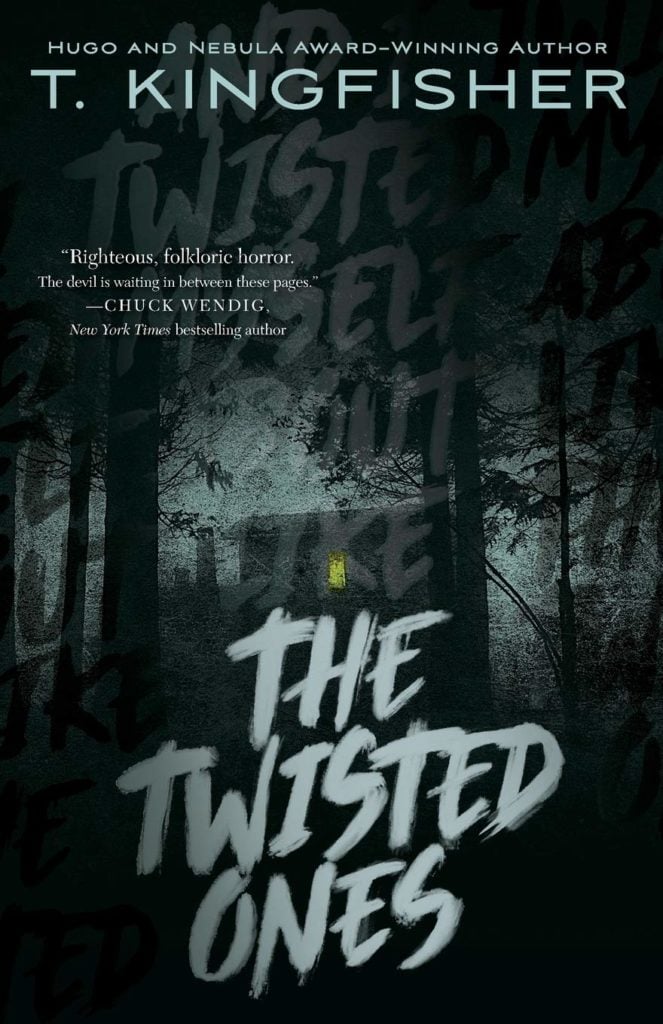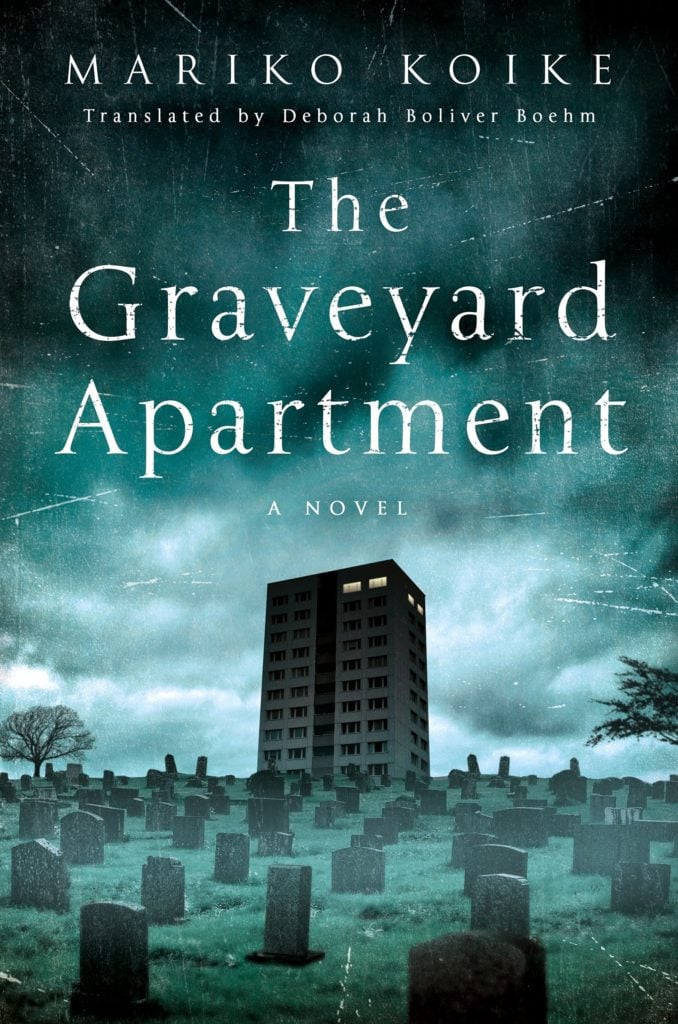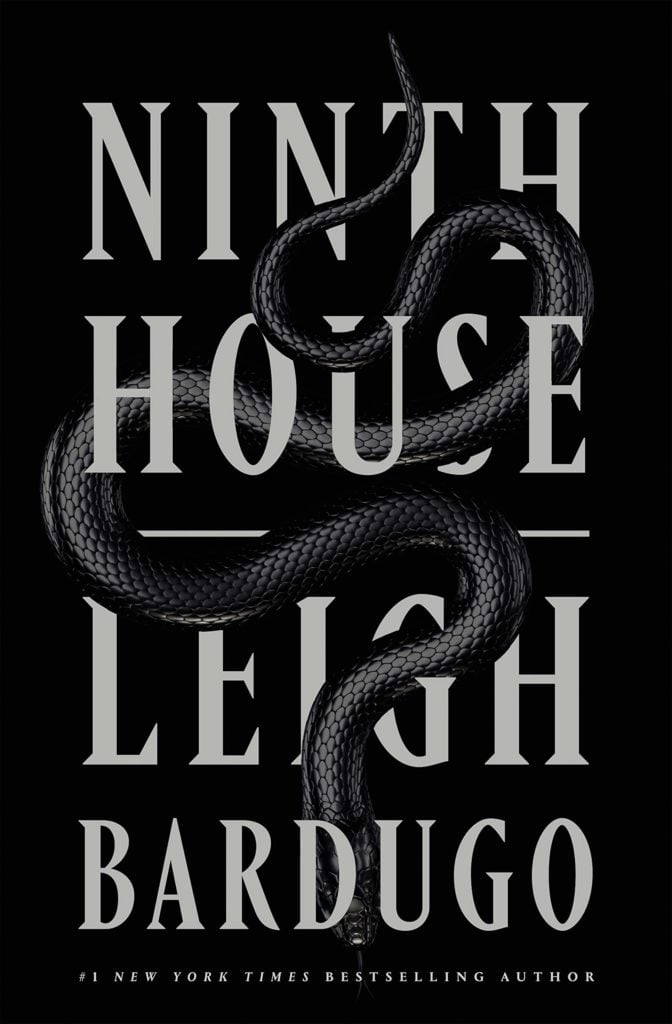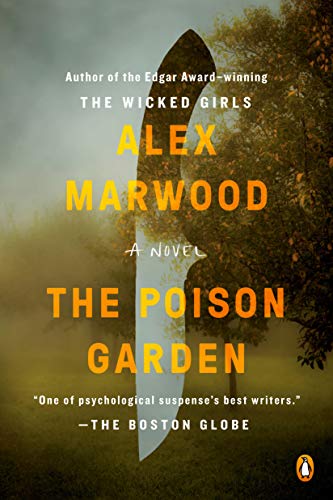Previously: Books That Scared The Pants Off Me When I Was A Kid.
I learned very early in life that, if I always had a book with me, I would never be bored. As such, I grew up into the kind of adult who is always, always, always reading. So, since it’s been a while since I last devoted a standalone post to book recommendations, here’s a selection of spooky books populating my bookshelf right now — ones I’ve particularly enjoyed in recent memory.

It’s perhaps worth noting that when I say “spooky” books, I don’t necessarily mean straight-up horror. Some of them are, of course, but to me, a spooky book can be of pretty much any genre. The label is more about the kinds of feelings I get from them — pieces of storytelling that strike me as eerie, chilling, frightening, melancholy, high stakes, or any combination of the above, plus a whole lot more. I think I’ve noted before that they’re the kinds of things I like to read the most during the fall, when the days get shorter and the weather starts to turn; however, I absolutely read them at any and all times of year, too, so even though I gravitate even more towards them during one season, they’re obviously good at any time of year.
[Like what you read? Check out Dangerous Games To Play In The Dark, available from Chronicle Books now!]
They’re presented in no particular order; I just… really enjoyed these books.
Not included on this list, meanwhile, are a few volumes that I loved, and which I think the average TGIMM reader will love, as well, but which are more fantastical than spooky — think Erin Morgenstern’s The Starless Sea, Ta-Nehesi Coates’ The Water Dancer, Genevieve Cogman’s The Invisible Library series, Helen Oyeyemi’s Gingerbread, and so on.
I also have tons of stuff on my To Be Read list which I couldn’t include here because I, uh, haven’t read them yet: Joe Hill’s Full Throttle, Emily St. John Mandel’s The Glass Hotel, Paul Tremblay’s Growing Things, Cherie Priest’s Toll, the new English translation of Thomas Olde Heuvelt’s Hex, and more. (My library’s wait list can be really long.)
In any event, there are Amazon affiliate links throughout the list below for easy reference. However, these books are all also readily available at other retailers large and small (try searching IndieBound for independent booksellers), and may be part of your local library’s collection, as well, so you’ve got plenty of options if you’re not an Amazon person.
Before we begin, I’m going to take one second to plug my own book Dangerous Games To Play In The Dark — it is, in fact, a spooky book, and I’m pretty proud of it, so check it out if you feel so inclined; published by Chronicle Books, it’s available both in hardcover and e-book via retailers like Amazon, Barnes & Noble, etc., as well as at a number of independent booksellers and at Chronicle’s own website. (Info and links here.) Also, it was recently translated into German! That version, a paperback, can be found here, for those of you who live in German-speaking regions.
And now, without further ado, books! 13 options below. Happy reading!
The Twisted Ones by T. Kingfisher

It starts with a house. An old house, belonging to an old, dead woman, full of old things — things no one wants or needs, and which must be dealt with, now that the woman is gone. It’s not a happy house; it has, after all, been shut up tight for the past two years. But it was also never a happy house — it has, for as long as it has stood, been a house full of bitterness and coldness and unkindness.
But someone has to clear it out — and that someone, unfortunately, is Melissa, known as Mouse. And although Mouse expected to find a high degree of unpleasantness in what was once her grandmother’s house when she accepted the request from her father, she didn’t expect to find all those totems in the woods. And she certainly didn’t expect those totems to come alive.
I picked up The Twisted Ones (not to be confused with the Five Nights At Freddy’s novel of the same name) back in December after seeing a lot of writers I greatly respect rave on social media about how truly frightening they found it. I’ll confess that I didn’t find it quite as scary as I was hoping I would — but it’s still a wonderful read, about grief and complicated family dynamics and stalked by uniquely creepy creatures. It’s also replete with fully-drawn characters with whom I, quite honestly, just wanted to be friends; when they’re in danger, therefore, the stakes feel incredibly high, because I just wanted everyone to be okay. It’s folk horror for a modern audience, and well worth your time.
Rooms by Lauren Oliver
Like The Twisted Ones, Rooms begins with a house belonging to someone who died in need of clearing out and selling. In this case, though, it’s a huge country manor, rather than a more modest single-family dwelling in the woods, and three people, rather than one, arrive to… well, maybe not clear it out themselves, but facilitate the whole thing. The deceased is Richard Walker; the three family members, his ex-wife Caroline, his 20-something daughter Minna, and his teenage son Trenton.
And in the house, of course, are ghosts — two of them at first, Alice and Sandra, and then, eventually, a third, although this one is more mysterious than the other two, and somehow unknowable.
There are multiple mysteries to unravel here, many of which at first seem unrelated, but which do, as reviewer Alaya Dawn Johnson put it at NPR, fit together “like a puzzle ring.” Whereas The Twisted Ones was folk horror, more about what was happening around the house than within it, Rooms is a haunted house story — although not necessarily a “good, old-fashioned one.” It uses tropes common to a good, old-fashioned ghost story, but ultimately becomes more than the sum of its parts.
Imaginary Friend by Stephen Chbosky
Lots of kids have imaginary friends. It’s a common developmental stage that might begin around the age of three and taper off by the age of 11. So it’s not unusual that seven-year-old Christopher Reese would find an imaginary friend of his own, especially given what he’s been through — the sudden death of his father by suicide, the abusive relationship his mother, Kate, found herself in afterwards, and the arrival in Mill Grove, Pennsylvania when Kate fled that relationship with Christopher in the middle of the night.
But what if an imaginary friend turned out not to be so imaginary? What if it was actually something in the woods outside a small town in Pennsylvania — something that shouldn’t be there? Something that’s been preying on the town for generations? And what if this imaginary friend wasn’t as friendly as you’d been led to believe?
Imaginary Friend is, somewhat astonishingly, Chbosky’s first novel to be published since The Perks Of Being A Wallflower, which originally hit shelves in 1999. Which is not to say that he’s been idle since then; he hasn’t. (He’s worked primarily in film and television as a director, writer, and producer, with projects like the screenplays for the big screen version of Rent and the 2017 live-action Beauty And The Beast and the co-creation of the television series Jericho under his belt.) But given what a cultural flashpoint Perks was for a particular generation of people — including myself; I was in high school when Perks was originally published, and it factored prominently in my high school experience — it’s still surprising to me that, until now, that one work was Chbosky’s one and only novel.
This one was a long time coming, is what I’m saying, and perhaps understandably so: So much of Imaginary Friend is about living with and escaping abuse — which often still follows you, even if you do get away — that the writing of it must have been draining. And there’s much in Imaginary Friend to find horrifying, both from a child’s perspective and from an adult’s. It’s far from a perfect novel — it’s long, for one thing, perhaps longer than it should have been — but as Elizabeth Macneal (see below, re: The Doll Factory) noted in her review for the New York Times, Chbosky and Imaginary Friend are best when looking “at everyday people, their trauma, their interactions, and the hundreds of human inconsistencies and desires that can make a community fall apart and knit itself back together again.”
The Graveyard Apartment by Mariko Koike

The Graveyard Apartment has been recommended to me left, right, and center for ages now, so it’s about time that I finally picked it up. Originally written in 1986, Mariko Koike’s tale of a young family who move into a luxury apartment building in Tokyo that turns out to be… let’s call it more than advertised received a new English translation in 2016, making it much more accessible to Western audiences. And if J-horror about haunted places — think Dark Water, Ju-on, etc. — does it for you, this one is absolutely worth checking out.
When the Kano family move into the Central Plaza Mansion apartment building, it’s brand new and seemingly perfect — just what Teppei, Misao, and their young child, Tamao are looking for. Its perfection is marred only by its neighbors: The building is bordered by abandoned and derelict houses, a Buddhist temple, a crematorium, and — as the title suggests — a cemetery. Soon, it becomes clear that there’s more going on here than meets the eye, and, well… there’s a reason that so many of the residents move out again so quickly after moving in.
Like Alex Brown, who reviewed this translation over at Tor.com in 2016, I found the first two-thirds of the book a bit slow; I can’t say whether that’s because of the translation itself, because of the fact that some of the tropes are now overly familiar to me, or both, but it feels a bit pedestrian at times. The last third, though? Well, when things start rolling, they really start rolling. The finale is viscerally horrifying in ways that I… probably shouldn’t tell you too much about, lest it spoil the reading experience. Regardless, it absolutely sticks the landing.
Don’t forget to read the last two pages. They’re after the epilogue, so they’re easy to miss — but they’re actually some of the most important pages in the book.
To me, they change everything.
Horrorstor and We Sold Our Souls by Grady Hendrix
I’ve mentioned both Horrorstor and We Sold Our Souls before — reading Horrorstor was one of my recommendations for what to do on Halloween in 2018, while We Sold Our Souls landed on 2019’s Halloween activities list — but I’d like to underline here again just how much I enjoyed them both.
I was admittedly more taken with Horrorstor, largely because the concept of an IKEA knockoff that happens to be haunted is inherently funny to me. The presentation of the novel is also A-plus; each chapter begins with an IKEA-style diagram of a piece of furniture, except that gradually, it becomes clear that the furniture is… no longer furniture. (I’ll stop there, because otherwise I will give it away, and trust me, this is not a thing you want spoiled.) But most impressively is the fact that the whole thing isn’t just a funny premise. The level of social commentary here ends up being much more powerful than you might expect from a book about a haunted IKEA knockoff.
But We Sold Our Souls is also terrifically creative — a story not so much about selling your own soul to the devil in exchange for wealth, power, and fame, but about having your soul sold for you so that someone else can have wealth, power, and fame, all framed within the wonderful world of metal. It still kills me that I’ll never actually be able to hear the album at the center of the novel, Dürt Würk’s Troglodyte, because neither Dürt Würk nor Troglodyte actually exist.
Hendrix also writes the delightful Paperbacks From Hell newsletter, by the way. He also has two other novels, both of which I also hear good things about: My Best Friend’s Exorcism was his debut, while The Southern Book Club’s Guide To Slaying Vampires is his latest.
My Sister, The Serial Killer by Oyinkan Braithwaite
The definition of serial murder varies depending on which official you ask, but it’s often accepted to be that of two or more unlawful killings by the same perpetrator in separate events. So, by the time Korede’s sister, Ayoola, calls her and says, “Korede, I killed him” for the third time, she knows that the supposedly accidental deaths of Ayoola’s suitors are enough to classify her as a serial killer. She also knows to break out the bleach and rubber gloves, and that cleaning up her sister’s mess is going to require cleverness and a whole lot of elbow grease.
But My Sister, The Serial Killer isn’t really a story about murder — or at least, it’s not a murder mystery. It’s about complicated sibling dynamics, and how you navigate a relationship with someone you both love and hate. And, of course, a whole lot more.
If unreliable narrators are one of your favorite literary conventions — they are certainly are one of mine — there’s a lot here that will probably draw you in. My Sister, The Serial Killer dials that convention up to 11: Everyone is an unreliable narrator, from Korede as the teller of the novel’s main narrative to Ayoola when it comes to the narrative about her actions she tells Korede and possibly even herself. Not for nothing was this one nominated for the Booker Prize in 2019.
Ninth House by Leigh Bardugo

Lots of stories have been written about the secret societies of Yale University — so many that they’re not really “secret” anymore. (Heck, they’ve even got a Wikipedia page now.) But none of those stories go to quite the same place that Ninth House does.
In this version of Yale, the Ancient Eight secret societies do more than just launch their members into positions of wealth and power post-graduation; they each have a distinctive skill — the ability to construct and maintain glamours; to create portals; to control the weather. That kind of skill. And to police them all, there’s a ninth house — Lethe — which cleans up their messes, keeps them in line, and guards the university as a whole against the ghosts, called Grays, that can be found all around it.
And amidst it all is Galaxy “Alex” Stern — but what Alex, an outsider in more ways than one, finds when she reluctantly joins Lethe as its newest member is more than what even she had banked on.
Ninth House belongs to a genre I… don’t really have a name for. Although they’re often classified as horror, they’re not necessarily that; in fact, they often read more like adventure stories to me. But there are lots of elements to them that are typically ascribed to horror, as well as a healthy dose of SF/F — in fact, Ninth House itself is often described as fantasy — and a touch of thriller, too.
In other words, there’s a lot going on here — and at the end of the day, I would argue that it doesn’t really matter whether there’s an actual name for this genre. The fact that it’s multi-genre is kind of the point.
Anyway, all of this is to say that I loved Ninth House — it was absolutely a “can’t put it down” sort of book, spooky and thrilling and poignant all at once. Please read it at your soonest convenience.
Providence by Caroline Kepnes
In Nashua, New Hampshire, Jon Bronson is kidnapped.
His best friend, Chloe, feels his loss deeply.
Four years pass. The world Jon inhabited changes. Chloe changes. Everything changes. Everyone changes. Because that’s what happens when time goes by: Change happens.
Jon returns. He is different, and he returns to a different world.
But Jon is different in more ways than just one. “You have power,” his kidnapper tells him in a note left for him when he is set free, “power that will present itself to you slowly, so as not to overwhelm you. … We did good work down here, Jon, and it will be interesting to see the way things play out.”
Six years after that, Jon has fled Nashua for Providence, Rhode Island to protect those he loves from this “power.” Chloe is an artist living in New York, still looking for Jon after he left. And there’s a detective, too — a detective tracing a series of deaths, all from heart attacks, all suspiciously similar, and all which have one thing in common: Jon.
These days, Caroline Kepnes is best known for the Joe Goldberg books, thanks to the success of the currently-Netflix, originally-Lifetime adaptation of the series, You. And, to be fair, You and Hidden Bodies are both high on my list of recommended reading, and have been since before the TV show came out. But if you haven’t read Kepnes’ non-Joe Goldberg novel, you’re missing out.
Providence is a different kind of story than the Joe Goldberg stories. It’s more melancholic, for one thing, and enormously sad. But it hits you deep in your heart — and although the Joe books are thrilling and fascinating, Providence is, in some ways, more thought-provoking. Or at least, it is to me. Give it a shot; you might find it equally thought-provoking.
Social Creature by Tara Isabella Burton
Speaking of You, though, if you’re looking for something in that vein, might I recommend Social Creature? Frequently described as The Talented Mr. Ripley for the Instagram age, Social Creature is sure to scratch that itch.
Louise Wilson is 29, working three jobs, and living in an illegal sublet in Brooklyn (but not one of the trendy bits). Lavinia Williams is 23, “on a sabbatical” from Yale, and enormously wealthy — a Bright Young Thing whose access to money and privilege is virtually boundless. And once they meet, Louise promises to herself that she will remain a part of Lavinia’s world from here on out — no matter the cost.
That cost, it turns out, is about as high as it could possibly be.
There’s a lot about Louise and Lavinia’s relationship that echoes that of Beck and Peach; simultaneously, though, it’s also Joe and Beck’s — or, perhaps more accurately, Joe’s relationship to Beck’s world, to what Beck represents to him. It’s about class, and privilege, and “belonging in the room,” so to speak: Who belongs in it, who deserves to be in it, whether some people are more deserving than others of being it (and if so, whether they’re more deserving because of talent, or because of money, or because of influence, and on and on and on) — and, ultimately, what being so obsessed with the question of who deserves or doesn’t deserve to be in the room can truly do to a person.
The Poison Garden by Alex Marwood

Cults had a bit of a Moment in 2018 — but although that particular Moment may have passed, let’s face it: Cults are always fascinating (and horrifying), whether they’re in vogue or not.
Alex Marwood’s latest book, The Poison Garden, is ostensibly a cult story; there is, after all, a cult at the center of it — one that bears a similar resemblance to cults like the People’s Temple and Heaven’s Gate. Indeed, the book opens with the discovery of the demise of every single member of the Ark, as it’s called — except for Romy, who, at 21, is the sole surviving adult, and her half-siblings, teenagers Eden and Ilo, who are sent to live with their aunt after their mother perished in the cult’s mass death.
I’ve devoured every book Marwood — the pen name of Serena Mackesy — has published, and I’ve been waiting for this one for a long time. Her first three books came out in relatively quick succession — The Wicked Girls in 2013, The Killer Next Door in 2014, and The Darkest Secret in 2016 (in the United States, at least) — but The Poison Garden only arrived in the U.S. in January of 2020. It is, as all her books are, un-put-downable.
What I like so much about The Poison Garden is that it takes a very different tack than your standard cult story does. It’s not so much about reintegrating into society after leaving a cult as it is about… well, maybe I should leave that be for now, lest I spoil it. But as Oline H. Cogdill of the Associated Press observed, both life in the Ark and life “among the Dead” — the Ark’s name for the rest of society — are depicted as equally “appealing and appalling”; both “can easily be considered a poison garden.”
It all depends, as so many things do, on your point of view.
The Doll Factory by Elizabeth Macneal
I’m a sucker for ominous period pieces, particularly when dolls are involved, so although I stumbled upon The Doll Factory purely by chance as I clicked through a chain of recommended reading via my local library’s online catalog, it’s unsurprising that I checked it out immediately.
I was not disappointed; it’s marvelous.
Set in London during the time of the Great Exhibition, The Doll Factory weaves together factual people and events with fictional characters and narratives, with the resulting story beautifully intertwining multiple narratives and telling a Victorian horror story that’s both full of societal critique and chillingly eerie.
The cast of characters is wide and varied: There’s Iris, the doll painter-turned-artist’s model — and artist herself. For that is the price she sets for painter Louis Frost: She will leave her position at the doll factory to model for him, as long as he teaches her to paint properly. She has talent; she hopes to harness this talent by refining her hitherto self-taught skills, and become an artist in her own right.
There’s Louis himself, who is fictional, and the other artists of the Pre-Raphaelite Brotherhood, who are real;
There is Rose, Iris’ sister, who once had everything Iris did not, but lost it all after suffering and surviving smallpox;
There is Albie, a street urchin, Iris’ friend who creates delicate clothing for the dolls she and Rose paint together;
And there is Silas, a taxidermist who is often supplied with dead animals by Albie — and who develops a deluded obsession with Iris, one to which he’ll go to any lengths to satisfy.
Macneal’s prose is lush and evocative, the story deeply satisfying and told in exactly the way it needs to be. Don’t miss this one.
The Memory Police by Yoko Ogawa
I have discovered over the past decade or so that I really, really love contemporary Japanese literature. I started, as many do, with Haruki Murakami, largely because English translations of Murakami’s works are so readily available. By contrast, The Memory Police, for which Yoko Ogawa won every major literary award in Japan, was originally published in 1994 — but only received an English translation in 2019. I’m so glad it finally did, though; it’s chilling in its mundanity and rings very, very true to me.
The titular Memory Police oversee life on a secluded island. Periodically, the entire island is ordered to “forget” something — objects, ideas, pretty much anything is fair game. If they’re physical, they’re removed from the island; meanwhile, the population goes to great pains to remove any and all traces of these things from their minds. Most people do, in fact, forget these things; they no longer have the words for them, and although they might know that something they once had is missing, they can’t name it or describe it. Some people, however, do have the ability to remember everything the island has been ordered to forget — and if they don’t take great pains to remain undetected, they’ll be rounded up by the Memory Police, never to be seen again.
A dystopian tale with echoes of works like 1984, The Trial, and Fahrenheit 451, The Memory Police reads like a fable. The “forgetting” is a powerful metaphor made literal — I saw it as a refusal to acknowledge certain elements of a nation’s past so strong that the government opts to straight-up erase them from the public consciousness.
But: There are only so many things we can forget before we begin to lose more than just those things.
What happens if we forget too much?
If you, like myself, find yourself with more time to read than usual these days, hopefully these picks will give you something to while away the time. Got a favorite you read recently and want to recommend? Drop it in the comments!
***
Follow The Ghost In My Machine on Twitter @GhostMachine13 and on Facebook @TheGhostInMyMachine. And don’t forget to check out Dangerous Games To Play In The Dark, available now from Chronicle Books!
[Photo via Wendy van Zyl/Pexels]